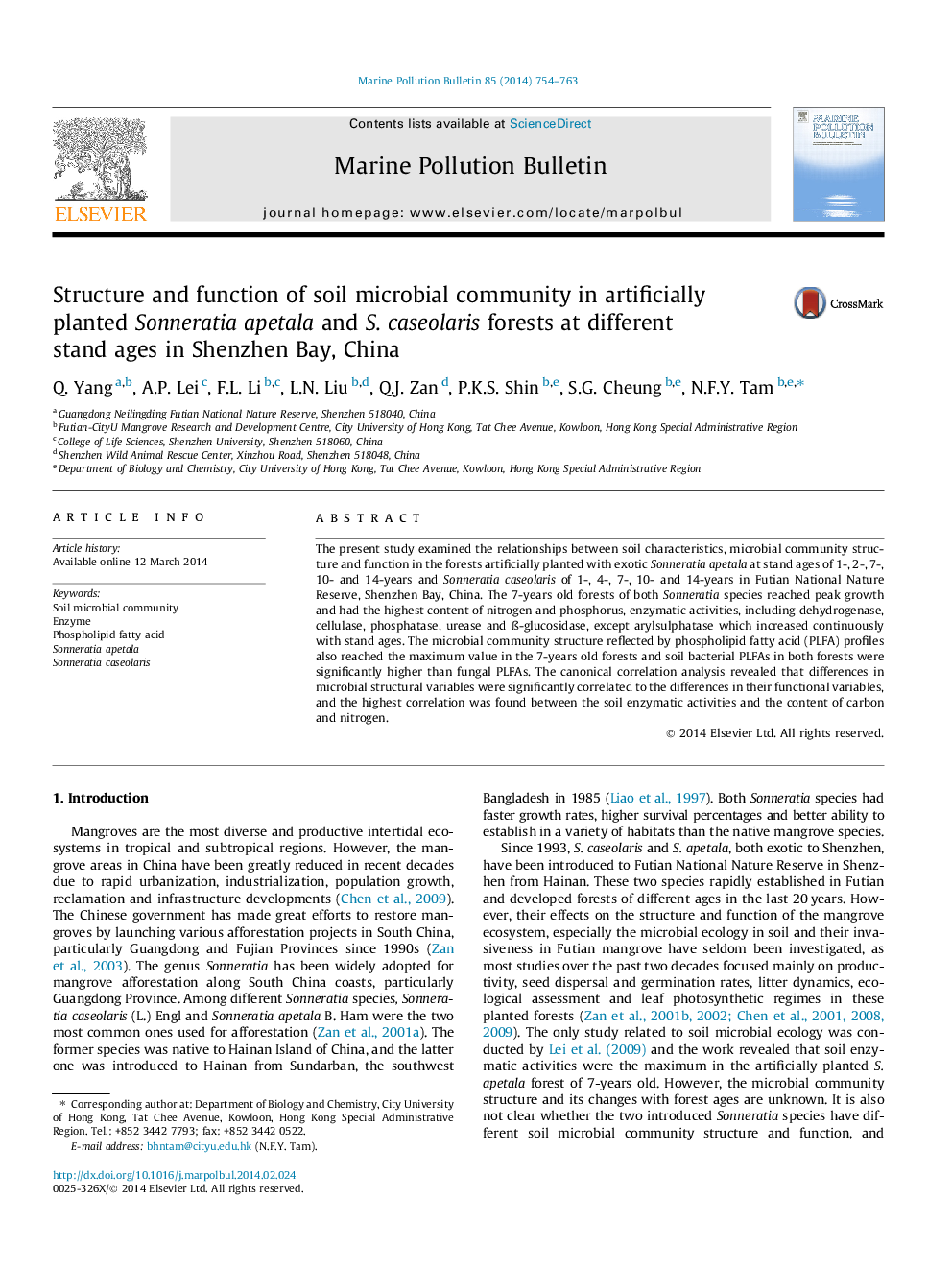| کد مقاله | کد نشریه | سال انتشار | مقاله انگلیسی | نسخه تمام متن |
|---|---|---|---|---|
| 6358562 | 1315630 | 2014 | 10 صفحه PDF | دانلود رایگان |

- Soil microbial community varied among exotic Sonneratia forests of different ages.
- Sonneratia caseolaris had a higher competitive ability than Sonneratia apetala.
- S. caseolaris soil had more abundant diagnostic PFLAs and higher enzyme activities.
- Both forests reached peak growth, highest activities and abundant PLFAs in 7 years.
The present study examined the relationships between soil characteristics, microbial community structure and function in the forests artificially planted with exotic Sonneratia apetala at stand ages of 1-, 2-, 7-, 10- and 14-years and Sonneratia caseolaris of 1-, 4-, 7-, 10- and 14-years in Futian National Nature Reserve, Shenzhen Bay, China. The 7-years old forests of both Sonneratia species reached peak growth and had the highest content of nitrogen and phosphorus, enzymatic activities, including dehydrogenase, cellulase, phosphatase, urease and Ã-glucosidase, except arylsulphatase which increased continuously with stand ages. The microbial community structure reflected by phospholipid fatty acid (PLFA) profiles also reached the maximum value in the 7-years old forests and soil bacterial PLFAs in both forests were significantly higher than fungal PLFAs. The canonical correlation analysis revealed that differences in microbial structural variables were significantly correlated to the differences in their functional variables, and the highest correlation was found between the soil enzymatic activities and the content of carbon and nitrogen.
Journal: Marine Pollution Bulletin - Volume 85, Issue 2, 30 August 2014, Pages 754-763